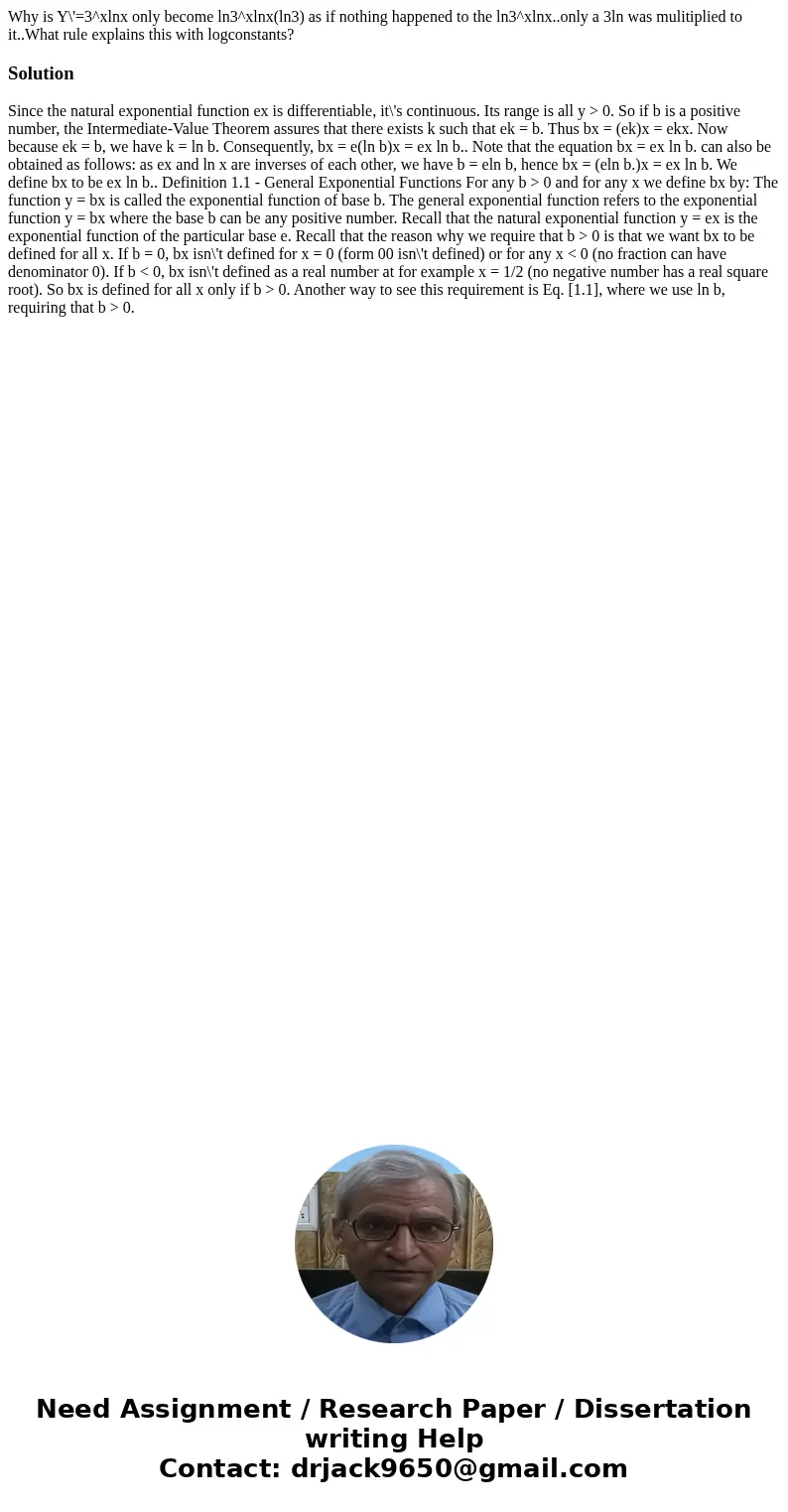Why is Y3xlnx only become ln3xlnxln3 as if nothing happened
Why is Y\'=3^xlnx only become ln3^xlnx(ln3) as if nothing happened to the ln3^xlnx..only a 3ln was mulitiplied to it..What rule explains this with logconstants?
Solution
Since the natural exponential function ex is differentiable, it\'s continuous. Its range is all y > 0. So if b is a positive number, the Intermediate-Value Theorem assures that there exists k such that ek = b. Thus bx = (ek)x = ekx. Now because ek = b, we have k = ln b. Consequently, bx = e(ln b)x = ex ln b.. Note that the equation bx = ex ln b. can also be obtained as follows: as ex and ln x are inverses of each other, we have b = eln b, hence bx = (eln b.)x = ex ln b. We define bx to be ex ln b.. Definition 1.1 - General Exponential Functions For any b > 0 and for any x we define bx by: The function y = bx is called the exponential function of base b. The general exponential function refers to the exponential function y = bx where the base b can be any positive number. Recall that the natural exponential function y = ex is the exponential function of the particular base e. Recall that the reason why we require that b > 0 is that we want bx to be defined for all x. If b = 0, bx isn\'t defined for x = 0 (form 00 isn\'t defined) or for any x < 0 (no fraction can have denominator 0). If b < 0, bx isn\'t defined as a real number at for example x = 1/2 (no negative number has a real square root). So bx is defined for all x only if b > 0. Another way to see this requirement is Eq. [1.1], where we use ln b, requiring that b > 0.
 Homework Sourse
Homework Sourse